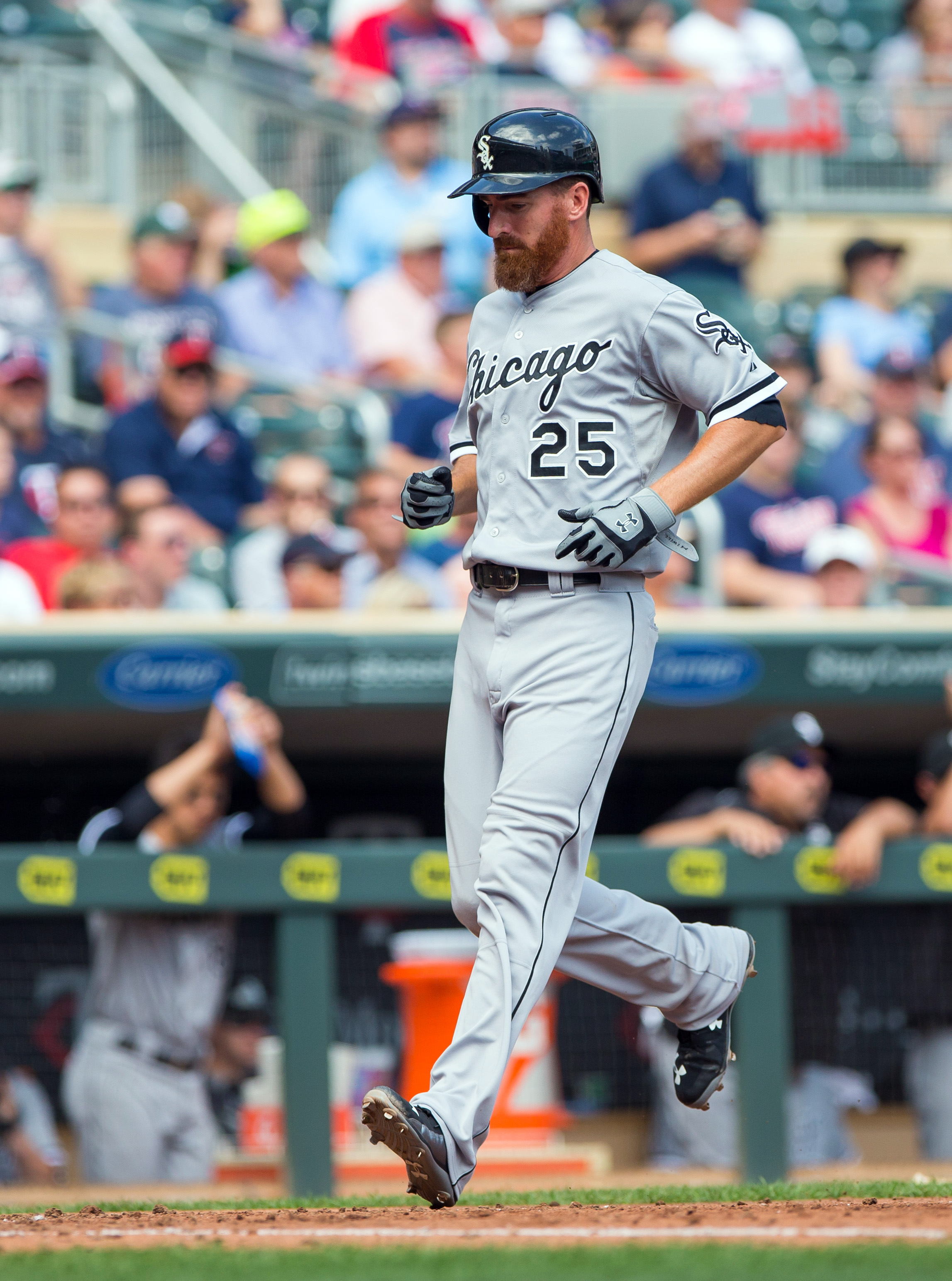Per WARP, the White Sox were at or below replacement level at three positions last year: 2B (-1.6 WARP), 3B (-0.8), and DH (0.0).* This year, PECOTA (before Adam LaRoche’s unexpected retirement) projects a WARP total of 1.9 at 2B, 2.3 at 3B, and 1.9 at DH.** Acquiring Brett Lawrie and Todd Frazier filled the first two holes such that PECOTA projects about 2 WARP apiece from those positions, while the Sox brass didn’t do anything to address DH directly, so what gives?
A slightly longer look at PECOTA reveals what gave: Rick Hahn, specifically dollars to Austin Jackson, even though he likely (hopefully) won’t log more than a handful of PA at DH this year. Acquiring Jackson gave the White Sox a credible extra outfielder they were in sore need of, which means that Adam Eaton and Melky Cabrera can slide down the defensive spectrum a little bit and the White Sox can allocate more PA to their actually good hitters.
This would be a pretty big change in approach for the Sox. Until LaRoche retired, this year was shaping up to be the first DH-by-committee situation for the White Sox since the Mark Kotsay era of 2010. For most of the last 20 years, the White Sox have filled that lineup slot the more conventional way: put an old 1B there and hope for some dingers. They were forced into the committee route by default last year when LaRoche proved himself incapable of hitting, and one could be optimistic that this year they would get a boost from the position relative to the league.
This being an article about White Sox position players, though, there were compelling reasons for pessimism. One easy way to summarize this is that any team for which Austin Jackson represents a real improvement is a team with real problems. The White Sox simply don’t have any hitting depth. As I write this, I think the second-most credible first baseman on the roster is Todd Frazier, who’s played a cumulative half-season at the cold corner (none last year) and is also the starting third baseman. If any position player comes down with any sort of injury, it will necessitate a shuffling that won’t be pretty; before LaRoche left, the most likely casualty of that would’ve been the DH production.
The lack of depth might be why the White Sox have so rarely gone without a regular DH. For the committee route to work well, a club needs a mix of guys at different positions who hit from different sides of the plate to mix and match, and needs all of them to be credible major league hitters. That way, players get opportunities when they’re in a position to succeed, and nobody bears too much of the load. Most of the time, teams don’t get the same results from this system as with a single starter, but they get to use more resources on the rest of your roster, so it evens out.***
The operative phrase is credible major league hitters, and when there aren’t any, what happens is the offense hemorrhage that befell the 2015 Sox. This is what happens when a team doesn’t develop a single good-hitting prospect for more than a decade: there’s no insurance policy for two successive pricey free agent DHs going in the tank.
You’ve likely noticed that a hefty amount of the preceding sentences have been conditional. The reason is simple: at this point, we can’t know what the Sox will do to fill LaRoche’s role on the roster, and with a meaningful amount of budgeted payroll freed up, we can’t even rule out decent-sized acquisitions. If a single competent major leaguer like Jackson can move the needle, another, actually good MLB player’s impact should be even bigger. Hitting depth isn’t just a matter of a backup plan in case of injury; even a minimal amount of it can flow through the roster and strengthen every position. With the White Sox right on the cusp of contention, $13 million in zombie money and a free roster spot might be just the boost they need.
*-DH goes to -1.0 if Jose Abreu’s PA at DH are counted toward 1B and the reverse is done for Adam LaRoche.
**-That last including the healthy bump from days where Abreu would’ve played DH with LaRoche at first. All your favorite caveats about projections, WARP, and preseason depth charts apply.
***-To put this in more concrete terms: the average AL team from 1996-2014 received 350 PA at DH from the player with the most time there. Teams above that cutoff had an average cumulative line about 12% better than the league average DH, and teams below it were about 7% worse. As with most analysis that conditions on playing time, the causality goes in both directions. (Numbers via Retrosheet and the Baseball Reference Play Index).
